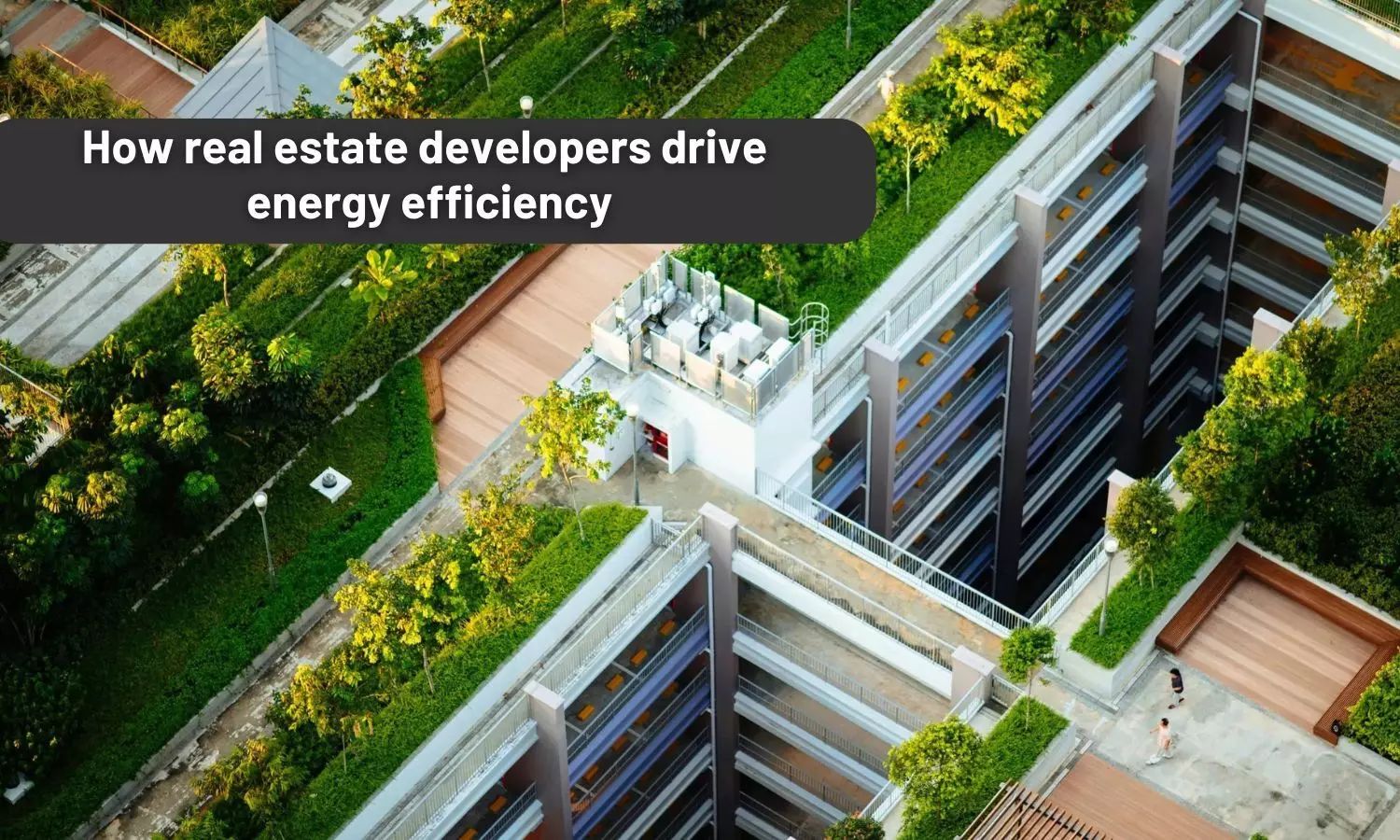How real estate developers drive energy efficiency
From high-efficiency buildings to water conservation, developers lead the charge for a greener future
How real estate developers drive energy efficiency

Certifications like IGBC, LEED, and WELL are benchmarks for sustainable real estate. Explore how these platforms evaluate energy efficiency, indoor air quality, and material selection, setting the standard for green buildings in India
As the global population grows and economic development advances, sustainable practices become imperative to secure natural resources for future generations. Climate change, pollution, deforestation, and biodiversity loss are pressing challenges. Yet, technology offers crucial solutions, facilitating renewable energy, waste reduction, and efficient resource management to mitigate these issues.
Metropolitan planning methods must be revamped to transform cities into smart, sustainable hubs. By prioritizing mixed land-use development, green spaces, and pedestrian-friendly zones, the real estate industry can play a key role. This shift promises a better quality of life for residents and allows developers to demonstrate their commitment to an eco-friendly future.
India's real estate sector is advancing towards sustainability, buoyed by government support and initiatives such as the Pradhan Mantri Awas Yojana (PMAY) and the Affordable Rental Housing Complexes (ARHC) scheme. These programs prioritize the development of sustainable and affordable housing solutions, addressing both housing shortages and environmental concerns.
Furthermore, a KPMG study reveals a remarkable 83 per cent increase in green office stock from 2016 to 2023 within the Indian office real estate market. This surge reflects a significant embrace of environmentally friendly building practices. Additionally, as of 2023, 61 per cent of office spaces across India have achieved green certification, signaling a substantial commitment to sustainability within the sector.
Real estate developers continually pioneer innovative and cutting-edge solutions to enhance the energy efficiency of business facilities. Several examples of these solutions include:
- High Efficiency Buildings: A high-performance building stands out for its state-of-the-art facade, meticulously crafted to amplify energy efficiency and guarantee supreme comfort. The exterior glass facade should focus not only on cutting down heat but also allowing ample natural light inside the building. Internally, features such as energy-efficient lighting and HVAC systems are intricately planned to reduce energy usage. This sustainable approach is reinforced by a robust energy management system furnished with intelligent controls for meticulous supervision. Inclusion of solar panels and green roofs to reduce dependency on external power is also a good way to improve sustainability of any office building or campus.
- Water Conservation Initiatives: Implementing water-saving fixtures and educational programs to achieve near Net Zero Water usage. This includes installing low-flow faucets and toilets and raising awareness among employees about responsible water usage habits. Additionally, integrating an efficient wastewater recycling system and rainwater harvesting, prioritizing water reuse and replenishment. Low-water-use native landscaping is introduced to minimize water usage and promote biodiversity, aligning with sustainable practices.
- Waste Segregation Onsite and Recycling: Segregating waste streams within the office environment, including paper, plastics, and organic waste, serves to diminish the environmental footprint by mitigating landfill accumulation and preserving resources within the office space. Consequently, this practice not only curtails operational expenses linked to waste disposal but also fosters employee involvement in adopting eco-conscious behaviours.
- Focus on Health and Comfort: Projects that embrace biophilic design principles come with abundant natural light, unobstructed views, consistent thermal comfort, excellent air quality, easy access to ventilation, and lush green terraces seamlessly integrated throughout.
Incorporating these elements results in maximizing energy utilization by introducing cutting-edge sensors and controls. Tenant energy expenses can be decreased further through these efforts, which also help the environment reduce energy waste.
Green building certification platforms such as IGBC, LEED, and WELL are crucial for assessing how sustainable real estate properties are. Systems for certifying green buildings provide structures and instruments for assessing the environmental impact and sustainability of construction projects. These systems evaluate energy efficiency, indoor air quality, material selection, and site development, among other aspects of a building's sustainability. They make it easier to measure and compare the environmental performance of buildings by creating a uniform framework and assigning ratings or certifications by predetermined standards and benchmarks.
Despite the common misconception that environmentally friendly development equals higher prices, research indicates that eco-friendly measures can have a significant positive impact on the economy. Long-term operational costs are reduced in energy-efficient buildings, resulting in large electricity bill savings. A green building can result in 20 per cent–30 per cent reduced electricity expenditures and 30 per cent–50 per cent cheaper water supply prices, according to a CBRE analysis. For this reason, India has seen a 37 per cent growth in the availability of green buildings during the previous five years.
This shift towards sustainable development underscores the industry's recognition of its environmental impact and its responsibility to society. By integrating sustainable practices into real estate development, India not only addresses pressing environmental issues but also meets the evolving needs of its population in a socially responsible manner.
(The author is the Vice-President – Strategic Development at Sattva Group)

